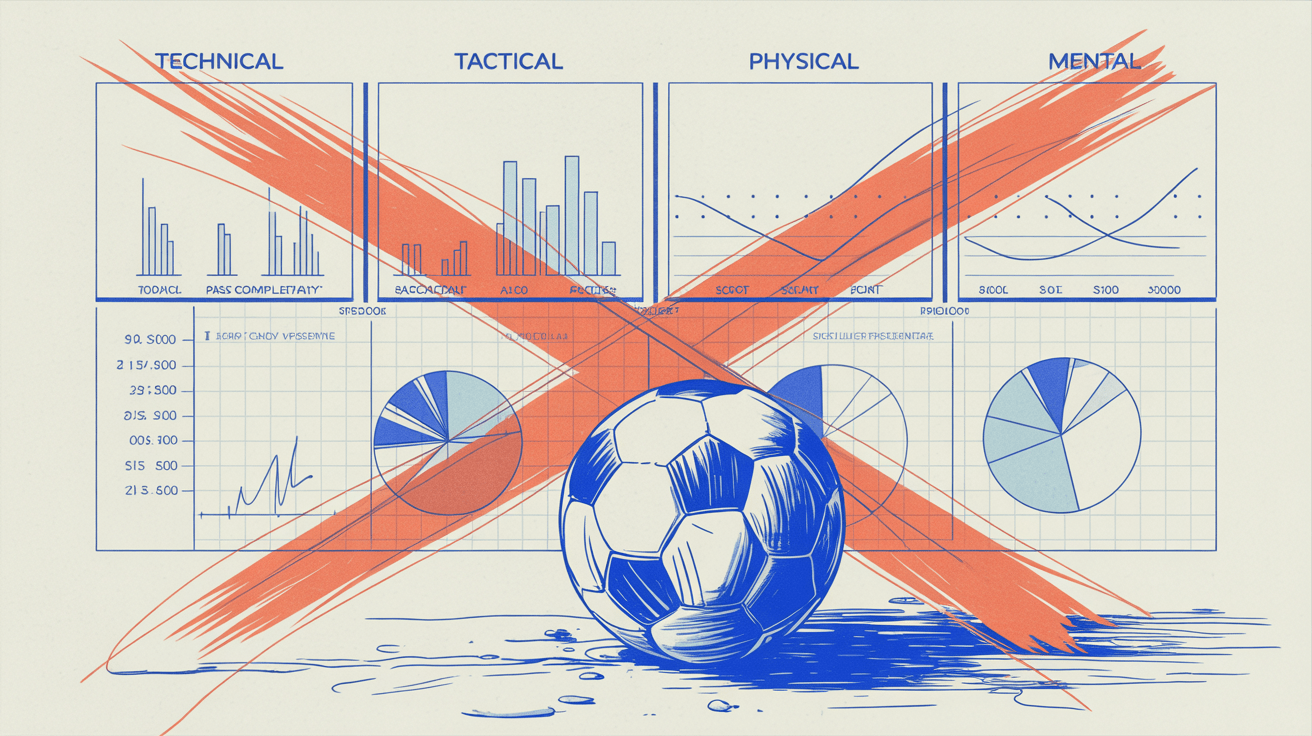Why do some football scouts consistently discover the next generation of stars while others miss talent right in front of them? After training hundreds of scouts worldwide at 360 Scouting, we’ve found the answer isn’t luck, it’s mastering seven key traits that separate the best from the average.
Every scout will tell you they could have found the next Messi, but that’s just talk. Real scouting success comes down to these seven proven traits that define the world’s most effective scouts.
Understanding modern football scouting
Scouting is about finding and evaluating players who could be good transfer targets. Scouts need to find suitable players that fit their club’s budget, style, and needs. But what makes some scouts much better at this than others?
Our experience shows that top scouts consistently do seven things well. They:
- watch and a lot of matches and know many players.
- gather a lot of valuable information from their network.
- assess current and potential level very accurately.
- recognize strengths and weaknesses precisely.
- match the collected info with what the club they work for is looking for.
- have a good understanding of obtainability of players.
- communicate their findings very clearly.
1. Player knowledge
The more matches and players a scout watches, the more valuable information they can access. Over several seasons, dedicated scouts build both a database of reports and a mental library of what good players look like at different levels.
This extensive viewing creates the foundation for better decision-making. You simply can’t spot patterns and exceptions without seeing enough examples first.
2. Networking
The best scouts don’t just watch games; they build networks to exchange information and learn crucial details about players.
When important details about a player’s character or situation are just one phone call away, that’s a huge advantage for making better recommendations.

3. Level estimation
As a scout, you need to estimate two different levels of players. Their current level, which means how good they currently are, and their potential, which means how good they can become (one year from now, or three years from now, or in their prime, depending on the definition of the club).
Most scouts can recognize the best player on the pitch that day. Few scouts can see underlying qualities and preconditions that indicate the high potential some players might have even though they aren’t excelling just yet.
4. Strengths and weaknesses
Besides assessing how good a player is or can become, scouts also need to identify their strengths and weaknesses. And on top of that, they need to describe which style, formation or position they’d fit best.

5. Club context
Let’s assume club A and B have pretty much the same level (but their style differs heavily). Still, player A might be very suitable for club A and not at all for club B.
The reason is that every club has their unique context, based on the history, the expectations of the fanbase, the style of play, the current coach and the requirements per position.
The best scouts master understanding this context and finding players that specifically suit (or don’t suit) their club based on what is required there.
6. Obtainability
As mentioned before, most people can spot good players. But scouting isn’t about finding the best player, but about finding the most suitable player who is (potentially) affordable for the club.
If you evaluate a team with one star player who’s way out of reach for the club you are scouting for, it’s your challenge to find suitable players who might be interested in joining your club, and who are probably within the club’s budget.
Such market knowledge comes with experience and following transfers closely to build an accurate reference.
7. Communicating
Even the best analysis is useless if you can’t share it effectively. Elite scouts excel at turning complex observations into clear, convincing reports that influence decision-makers.
Key communication skills include:
- Writing detailed but readable reports
- Presenting findings in meetings
- Making cases for undervalued players
- Explaining how players would fit tactically
The ability to explain why a particular player represents good value or strategic fit often determines whether promising transfers actually happen.
Developing these skills
These seven traits aren’t talents you’re born with; they’re skills that improve through practice and proper training. At 360 Scouting, we focus on building these specific abilities because they consistently separate successful scouts from those who struggle.
The biggest challenge most scouts face? They have good football knowledge and can spot talent, but struggle to transform scattered observations into structured analysis and reporting. That’s where proper frameworks and methodology make all the difference.
Whether you’re trying to break into professional scouting or looking to enhance your current abilities, mastering these seven areas will significantly improve your effectiveness in identifying talent and contributing to successful transfers.
PS: Ready to develop these seven traits yourself? We regularly open application rounds for football scouts throughout the year. We’re looking for scouts who value structured methodology over scattered observations, exactly what we’ve discussed in this article. Please fill out the form to be notified when the next assessment becomes available. No CVs or cover letters needed, just your commitment to improving. We provide feedback on the assessment, even if you don’t advance, which helps you develop these seven essential traits further.



